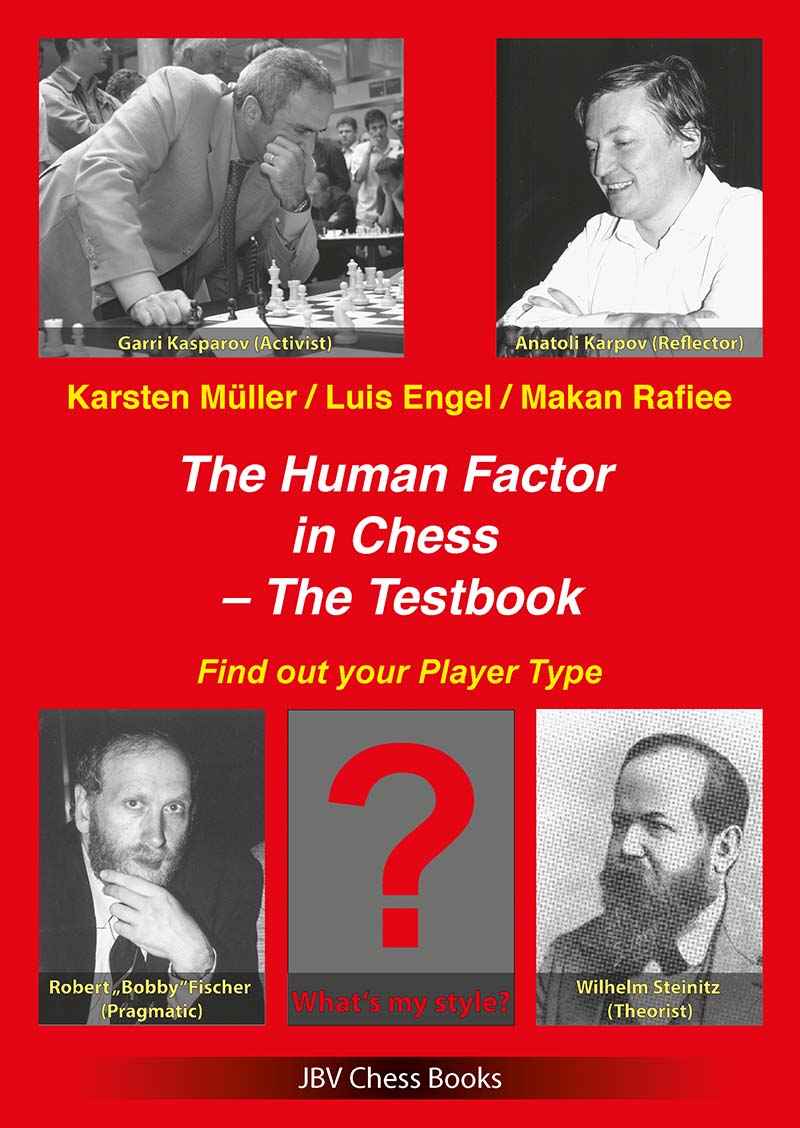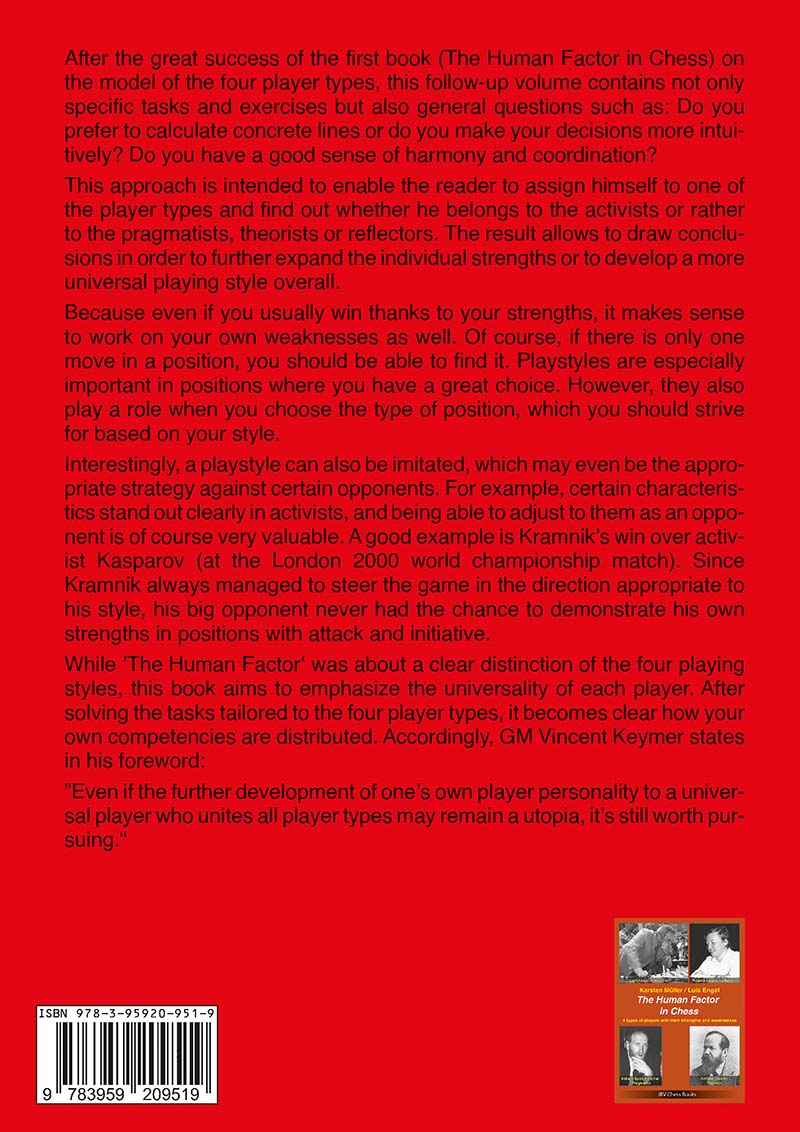Müller, Engel & Rafiee: The Human Factor in Chess - The Testbook
23,00 €*
Versandkostenfrei
Sofort verfügbar, Lieferzeit: 1-3 Tage
Find out your Player Type
206 Seiten, kartoniert, Joachim Beyer Verlag
Review by Alexey Root in August 2023
Grandmaster (GM) Karsten Müller, GM Luis Engel, and FIDE Master Makan Rafiee are the authors of The Human Factor in Chess - The Testbook, subtitled „Find out your Player Type.“ Published in 2023 by JBV Books, it is a follow-up volume to 2020’s The Human Factor in Chess, subtitled „4 types of players with their strengths and weaknesses.“ GM Vincent Keymer wrote the forewords to both the 2020 and 2023 volumes. USCF Sales carries the 2023 book for $24.95.
The following review also appeared on SparkChess in July 2023. I write for SparkChess twice a month.
What is your Player Type?
Do you prefer to calculate concrete lines, or do you make your decisions more intuitively? Do you have a good sense of harmony and coordination? The Human Factor in Chess - The Testbook helps you discover your Player Type through tasks and exercises.
The four Player Types are Activist, Theorist, Reflector, and Pragmatic. According to The Human Factor in Chess - The Testbook, knowing your Player Type allows you „to draw conclusions in order to further expand the individual strengths or to develop a more universal playing style overall.“
Chess Problems
While I found excerpts from Keymer’s 2020 foreword online, I could not find sample pages online from the 2023 volume. Publisher JBV Books mailed a review copy of The Human Factor in Chess - The Testbook to me. Here is a link (two problems on page 13) of the first two chess problems from the first chapter about Activists.
Answers
For the first problem, on the left, I initially considered 17. c3, using my c-pawn to defend my d-pawn. Then my knight could leave that pawn’s defense and attack Black’s king. But then I found 17.Bxg6! I was influenced by the problem being in the „Activist“ chapter. I figured an active move was expected.
In my opinion, finding „How should White continue?“ in the first problem is harder than deciding, in the second problem at right in the photo above, if Nf5 is good or bad. After all, I have a 50% chance to guess correctly regarding the quality of Nf5. Yet designating Nf5 as a good move got me 2 AP (Activist Points) while finding 17.Bxg6 got me 1 AP.
I could not find the authors’ formula for how points are awarded. Nonetheless, I enjoyed earning points. Also, I learned from the authors’ explanations of why the correct answers were superior to other moves.
Anmelden


